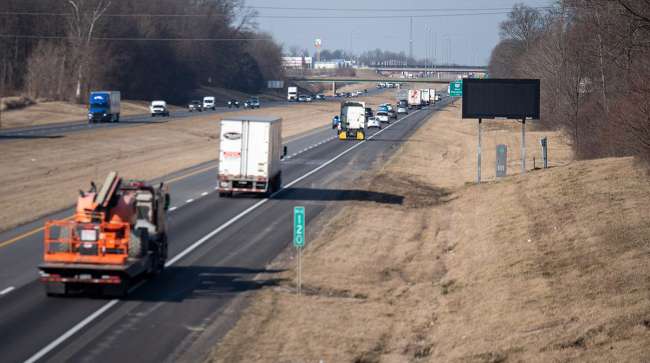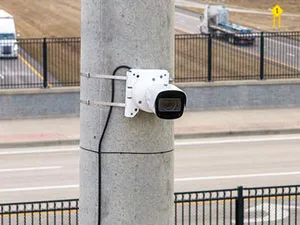Staff Reporter
Ohio Debuts Warning Signs to Deter Rear-End Highway Crashes

[Stay on top of transportation news: Get TTNews in your inbox.]
Ohio is putting wrong-way driver technology to use in a new “end-of-queue” warning sign system to deter deadly rear-end crashes at 13 dangerous highway areas where traffic suddenly comes to a stop due to congestion.
Gov. Mike DeWine recently joined Jack Marchbanks, director of the Ohio Department of Transportation, to announce the first system became active in a new real-time initiative using advanced technology in warning signs and mounted cameras along roadways that will detect traffic congestion and flash messages two miles ahead to alert drivers about upcoming dangerous slowdowns.
Signage locations will be in and around major urban centers identified by ODOT as high-congestion, high-crash areas. ODOT selected the 13 sites based on the data indicating those locations in the northeast, central and southwestern areas as most likely for serious rear-end crashes.
“I think we’ve all been in a situation, particularly when we’re out on the interstate highway, where traffic stops quickly and then your concern is you keep looking in your rearview [mirror] worried about someone that’s going to come up and is not going to be able to stop,” DeWine said. “Last year there were more than 8,800 highway rear-end crashes. We believe that distracted driving is a major reason why some drivers don’t slow down. They’re just not paying attention.”
When cameras at these sites detect slow or stopped traffic, they will automatically trigger a message board a few miles away to alert approaching drivers of the upcoming traffic hazard. Alerts will also be pushed to OHGO and other traffic apps. pic.twitter.com/NR5sIAYx5s — Governor Mike DeWine (@GovMikeDeWine) February 15, 2024
DeWine reinforced his commitment to improve roadway safety, citing nearly $10 billion the state has spent on some 4,800 infrastructure projects. He described the highway message boards as “simple but very, very effective.”
The new warning systems are specifically meant to reduce deadly “end-of-queue” crashes that occur when highway drivers fail to recognize slowing or stopped traffic, resulting in a collision with vehicles at the end of a slowed down traffic lane. Alerts will also be pushed to the state’s OHGO and other traffic apps.

Cameras detect slow or stopped traffic. (Colin Trubee, ODOT Division of Communications & External Affairs)
ODOT has now begun to install systems using advanced cameras that monitor live traffic and feed real-time information into ODOT’s traffic management center when vehicles begin to slow and back up. The technology system then immediately turns on digital messages to warn drivers two miles back from the location where there is a congested traffic slowdown.
Already, ODOT has activated a warning sign system on Interstate 70 westbound at State Route 310 in Lincoln County.
DeWine said ODOT expects this technology, which will take years to install, will reduce rear-end crashes on highways by 16% (1,400 crashes). He asked ODOT to identify high-risk areas to expand the warning sign program.
“When selecting sites,” he added, “ODOT looked at rush hour traffic backups and the number and severity of rear-end crashes. We believe this new technology will in fact work. We are going to expand it. This technology obviously does not replace the need for drivers to simply pay attention while they’re on the roads. The new tool we’re announcing today can help prevent crashes but, ultimately, it’s up to all of us who drive on the highways to pay attention to the roads.”
Marchbanks said the “end-of-queue” rear-end crashes on divided highways jumped to 8,811 last year compared to 6,624 in 2020.
He said ODOT in the past turned to radar to reduce these deadly types of crashes. But newer technology will be more effective. “Our resourceful engineers have now taken the technology used to detect wrong-way drivers and applied it to detecting traffic backups and congestion along our major highways,” he added.
Want more news? Listen to today's daily briefing below or go here for more info:




